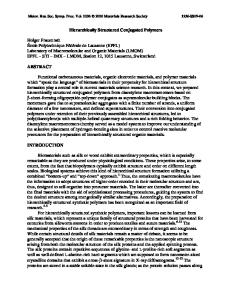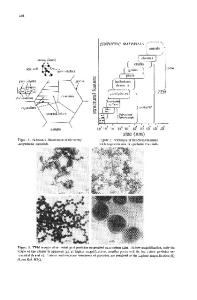Sintering of hierarchically structured ZnO
- PDF / 1,455,478 Bytes
- 10 Pages / 584.957 x 782.986 pts Page_size
- 100 Downloads / 323 Views
o¨ren Ho¨hn Fraunhofer-Institut fu¨r Keramische Technologien und Systeme, IKTS Dresden, 01277 Dresden, Germany
Rudolf Hoffmann Fachbereich Chemie, Eduard Zintl-Institut, Anorganische Chemie, Technische Universita¨t Darmstadt, 64287 Darmstadt, Germany
Jens Suffner Institut fu¨r Materialwissenschaft, Technische Universita¨t Darmstadt, 64287 Darmstadt, Germany; and Institut fu¨r Nanotechnologie, Karlsruher Institut fu¨r Technologie, 76021 Karlsruhe, Germany
Stefan Lauterbach Institut fu¨r Angewandte Geowissenschaften, Technische Universita¨t Darmstadt, 64287 Darmstadt, Germany
Ludwig Weiler, Olivier Guillon, and Ju¨rgen Ro¨del Institut fu¨r Materialwissenschaft, Technische Universita¨t Darmstadt, 64287 Darmstadt, Germany (Received 17 June 2010; accepted 25 August 2010)
Hierarchically structured zinc oxide was prepared from zinc acetylacetonate by a microwave-assisted process. The zinc oxide formed nanoparticles that are packed in substructured spherical agglomerates with a diameter of 0.5 mm. Nitrogen adsorption, x-ray diffraction, and dilatometry were used to investigate the densification. Ion beam method was applied to prepare cross sections and enable microstructural analysis. Three regimes of microstructural evolution were identified on different scales during sintering. In the first regime, nanoparticles changed morphology and densification occurred only in the interiors of the agglomerates. In the second regime, agglomerates became hollow and built necks. Simultaneously, densification set in on the macroscopic scale. A drastic homogenization of the microstructure was observed that marked the beginning of the third regime, where densification and grain growth occurred. I. INTRODUCTION
Zinc oxide (ZnO) exhibits interesting electronic, semiconducting, and optical properties and is therefore found in a wide range of applications. The majority of ZnO is used in the concrete and rubber industry to ameliorate the desired structural, thermal, and chemical durability.1 The medical and cosmetic industries use its optical properties. Here, ZnO acts as an absorber for ultraviolet light because of the direct band gap of 3.4 eV at 300 K.2 In combination with various metal oxides, ZnO is widely used as a varistor to allow for voltage limitation.3 Further, ZnO is used in sensor applications where its sensitivity toward gases is used.4,5 The electrical conductivity of ZnO can be tailored by doping with group III elements (e.g., Al, Ga, In). Transparent conductive oxides (TCO) based on ZnO are therefore applied in solar cells and transparent electronics.6–9 In the field of printed electronics, ZnO is investigated intensively as a stable and a)
Address all correspondence to this author. e-mail: [email protected] DOI: 10.1557/JMR.2010.0288 J. Mater. Res., Vol. 25, No. 11, Nov 2010
http://journals.cambridge.org
Downloaded: 17 Mar 2015
cost-effective alternative for silicon-based and organic electronics.10,11 A simple and economic approach for the production of zinc oxide is provided by wet chemistry. This metho
Data Loading...










